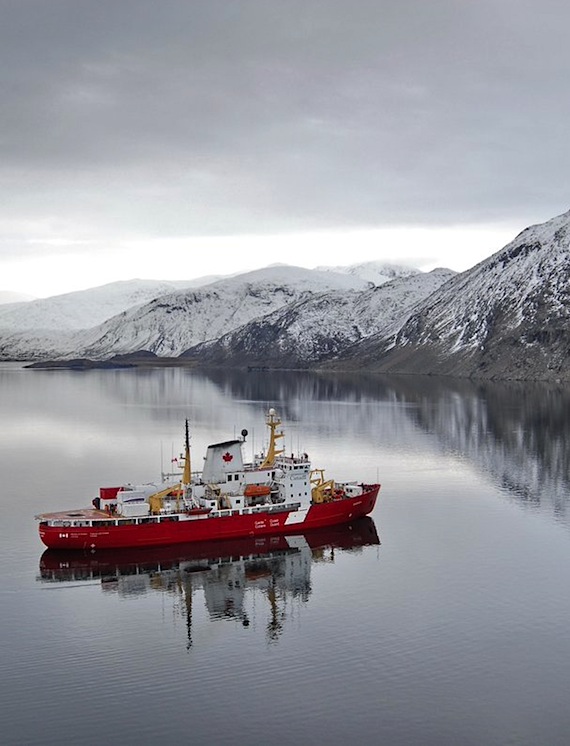Canadian Arctic icebreaking and sealift season starts early

The Canadian Coast Guard’s Arctic season is off to one of its earliest starts in 55 years.
But the icebreaking service will send in one less ship north than it did last year, according to a June 19 release.
And yet, the Coast Guard’s Arctic seasons and northern presence will expand over the next “several years,” the news release said, citing a $1.5 billion Oceans Protection Plan released last fall by the Department of Fisheries and Oceans, which also handles the Canadian Coast Guard.
Added federal focus puts the Coast Guard in a position to “support ocean science, management, and maritime security” as well as “our most northern residents” and protect the Arctic marine environment as well, said the release.
Canada’s aging Coast Guard fleet has depleted resources and less capacity to provide services of late, according to critics and a report released last year.
In preparation for the coming season, the Des Groseilliers departed Quebec City June 18, followed by a June 19 departure from Newfoundland by the Terry Fox. Both vessels are tasked with northern icebreaking as well as providing technical support, such as servicing navigational aids.
Upcoming departures of Coast Guard icebreakers include:
• Sir Wilfrid Laurier, July 3 from Victoria for science programming and icebreaking;
• Henry Larsen, July 10 from St. John’s to conduct icebreaking;
• Pierre Radisson, Aug. 25 from Quebec City for Arctic and international operations; and,
• Louis S. St-Laurent, Aug. 26 from Halifax for Arctic icebreaking operations and scientific programming, including the Joint Ocean Ice Studies program, an international collaboration between Canada, the United States, and Japan that monitors oceanographic conditions in the Arctic.
Iqaluit’s Marine Communication and Traffic Services Center, which saw its annual opening on May 15, will remain open until December.
The research icebreaker Amundsen, which left Quebec City May 25, will soon carry doctors and other experts to northern Quebec where they will conduct a Nunavik Inuit Health Survey.
When the icebreakers do sail near northern communities to break ice, crew members will let people know: “CCG crews will contact the community to ensure that hunters and other residents are advised to avoid the area during operations,” said the release.
As schedules permit, the crews will also reach out to communities to provide search and rescue and environmental response training as well as work with Coast Guard auxiliaries.
Auxiliary Coast Guard units in Nunavik have recently been certified and more units are expected to be created this year in Nunavut and the Northwest Territories, said the release.
This year the Coast Guard plans to work with Natural Resources Canada, the Royal Canadian Navy and the Canadian Hydrographic Service, as well as to provide support to a series of maritime voyages run by the Canada 150 project, called the Canada C3 Expedition, a 150-day expedition from Toronto to Victoria via the Northwest Passage.
Marine traffic for this season will pick up with the first leg of resupply and sealift operations, said the release.
You can follow daily updates on ice information here.